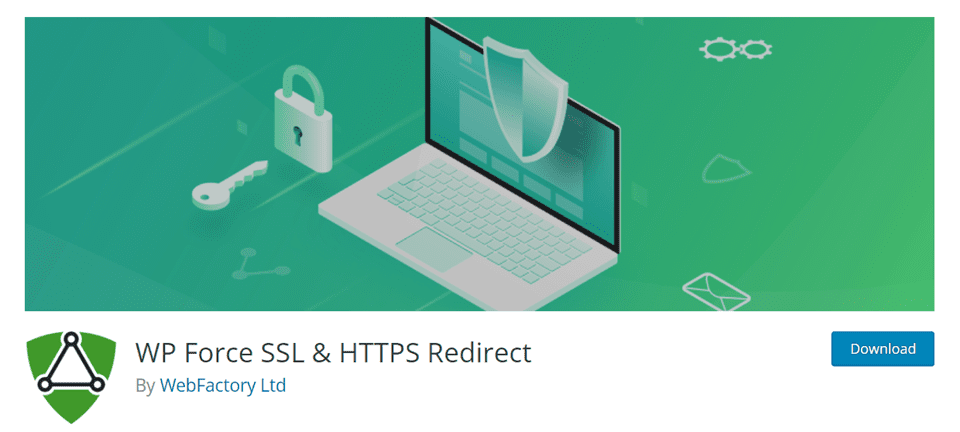As a site owner, you’re probably always looking for the best way to secure your WordPress website. There are a few options available to help you out, and one of them is a TLS certificate. In addition to letting search engines and users know your WordPress website is secure, TLS can help protect information and data that moves between your site and those who access it. If that sounds like something your site could use, read on.
What is TLS?
TLS stands for Transport Layer Security. It’s a website security protocol that protects both your website and its users, encrypting all data from end to end. According to the Mozilla Developer Network (MDN):
Transport Layer Security (TLS), formerly known as Secure Sockets Layer (SSL), is a protocol used by applications to communicate securely across a network, preventing tampering with and eavesdropping on email, web browsing, messaging, and other protocols. Both SSL and TLS are client / server protocols that ensure communication privacy by using cryptographic protocols to provide security over a network. When a server and client communicate using TLS, it ensures that no third party can eavesdrop or tamper with any message.
All modern browsers support the TLS protocol, requiring the server to provide a valid digital certificate confirming its identity in order to establish a secure connection. It is possible for both the client and server to mutually authenticate each other, if both parties provide their own individual digital certificates.
How Does TLS Work?
The follow-up to Secure Sockets Layer (SSL), TLS is used for web browsers and other internet-based applications and processes that require an exchange of data. Both TLS and SSL are the industry standard for internet security, although TLS is the most recent iteration. Both certificates convert an unsecured HTTP (hypertext transfer protocol) URL prefix to HTTPS (hypertext transfer protocol secure).
You can see in the image below that your browser will indicate if a website is secured by SSL or TLS with a lock icon next to the URL. Previously, Google Chrome colored this lock green; however, as web standards evolved and HTTPS became a criterion for search rankings, Chrome swapped to a standard grey, and only colored the lock red to indicate when a site was insecure.

What Does TLS Do?
A TLS certificate secures your WordPress website and your users’ information, ensures your URL boasts an HTTPS prefix, and helps to improve your website’s legitimacy and safety in search engines’ eyes (particularly Google).
TLS uses what’s known as a TLS handshake in order to securely connect a user with your website. The protocol encrypts that data end-to-end so it’s protected and can’t be interfered with by any third party. If a hacker or a malicious entity intercepted data from a website protected by TLS, all they would see is a mess of random characters rather than data they can use (or even read). TLS also authenticates each session that’s initiated between a user and your server, verifying that all parties are legitimate. In addition, a Transport Layer Security certificate helps to maintain your website’s integrity and reputation on search engines.
What Can TLS Protect Me From?
Having a TLS certificate on your website provides protection against malicious attacks, hackers, and data breaches. This level of security is now a standard for internet browsers. Google Chrome and Mozilla Firefox, for example, warn users when they attempt to access an unsecured HTTP website. Google and other search engines also penalize websites without an SSL or TLS certificate in search rankings.
On top of that, TLS provides a layer of protection against potential legal issues that could arise from having an unsecured website, especially if you store sensitive user information. You (or your business) could potentially land in hot water for storing that data improperly, particularly if your business processes payment information or involves storing sensitive health records. It’s best to ensure that your website is as secure as possible, from top to bottom. Although a TLS certificate is just one component of solid site security, it is one of the easiest to add to a site.
Why Does TLS Matter to WordPress Users?
Having a security certificate, whether TLS or SSL, absolutely matters to WordPress users. Running your site only on HTTP leaves it vulnerable to hackers looking to steal passwords and credentials. If you want to use HTTP/2 you won’t be able to do that without TLS. And, as mentioned previously, HTTPS offers SEO benefits to websites, which Google penalizes if they aren’t secure.
Website owners in general, not only WordPress users, need to be concerned about securing their websites via SSL or TLS. Either protocol works really well for encrypting communications between your site and its users, and both offer similar benefits.
Will TLS Affect My Site’s Performance?
Essentially, no. Transport Layer Security won’t affect your site’s performance noticeably, or in any immediately measurable way. For most users, there won’t be a noticeable lag in load times. Technically, TLS does use some load time, but it doesn’t differ drastically from an unsecured site. Any impact is likely going to be undetectable to the end-user. Interventions to circumvent potential slowdowns include TLS False Start and TLS Session Resumption, both of which provide shortcuts to the end-user when loading a secure website.
How to Use TLS on Your WordPress Site
It’s easy to start using TLS on your WordPress website. First, you’ll need to get a TLS certificate. Sometimes, you’ll see TLS used interchangeably with SSL certificates. If that’s the case, don’t worry. They’re both safe and secure, and either will do the job effectively.
You can find both paid and free options for these security certificates. For example, a number of prominent website hosts (such as SiteGround) include SSL certificates as part of their standard hosting packages. You can also get a TLS certificate from a Content Delivery Network (CDN) such as Cloudflare. We have a full rundown on how to get a free SSL certificate we highly recommend.
If you choose a free TLS or SSL certificate, ensure you’re getting it from a trustworthy source. In most cases, free Transport Layer Security certificates are just as secure as paid ones. However, you will likely need to renew the certificate often (such as every 90 days), and you might not get the full customer service support you need for your website security. SSL For Free and ZeroSSL are two solid free resources if you want to get started.
Plugins for WordPress

If you run a WordPress website, you can use a plugin to secure your website. Really Simple SSL can help you quickly migrate your website to HTTPS without a lot of fuss. If you have a certificate but still need a bit of help redirecting your site properly, you can use WP Force SSL & HTTPS Redirect. Alternatively, WP Force SSL has a paid, premium version that can also handle installing your SSL certificate alongside the redirects.
Conclusion
Transport Layer Security is, essentially, the evolution of SSL. Both boost the security of data exchanges between your site and its users. It doesn’t adversely affect site performance, and it’s easy for most website owners to access and install. This is especially true with WordPress, where you can choose from a number of great plugins to do the job for you.
With so many resources available to set up TLS on your WordPress website, it’s a no-brainer to get it going as soon as you can. After all, why risk your users’ data? Or your website, for that matter. With the right tools and plugins, you can have your site secured in no time, and the peace of mind is well worth the time investment.
Do you use a TLS or SSL certificate on your website? Why? Drop us a comment below and let us know.
Featured image via Seeker1983 / shutterstock.com









I wounder why many out there don’t understand the importance of SSL, everyday we see several sites with no SSL integrated.
Thanks Heley.
Best Wishes
Good article! But there appears to be some missing text, and an empty link, where it says, “If you want to use , you won’t be able to do that without TLS. “
I was not aware of the term TLS. Thanks for updating my understanding of SSL/TSL.